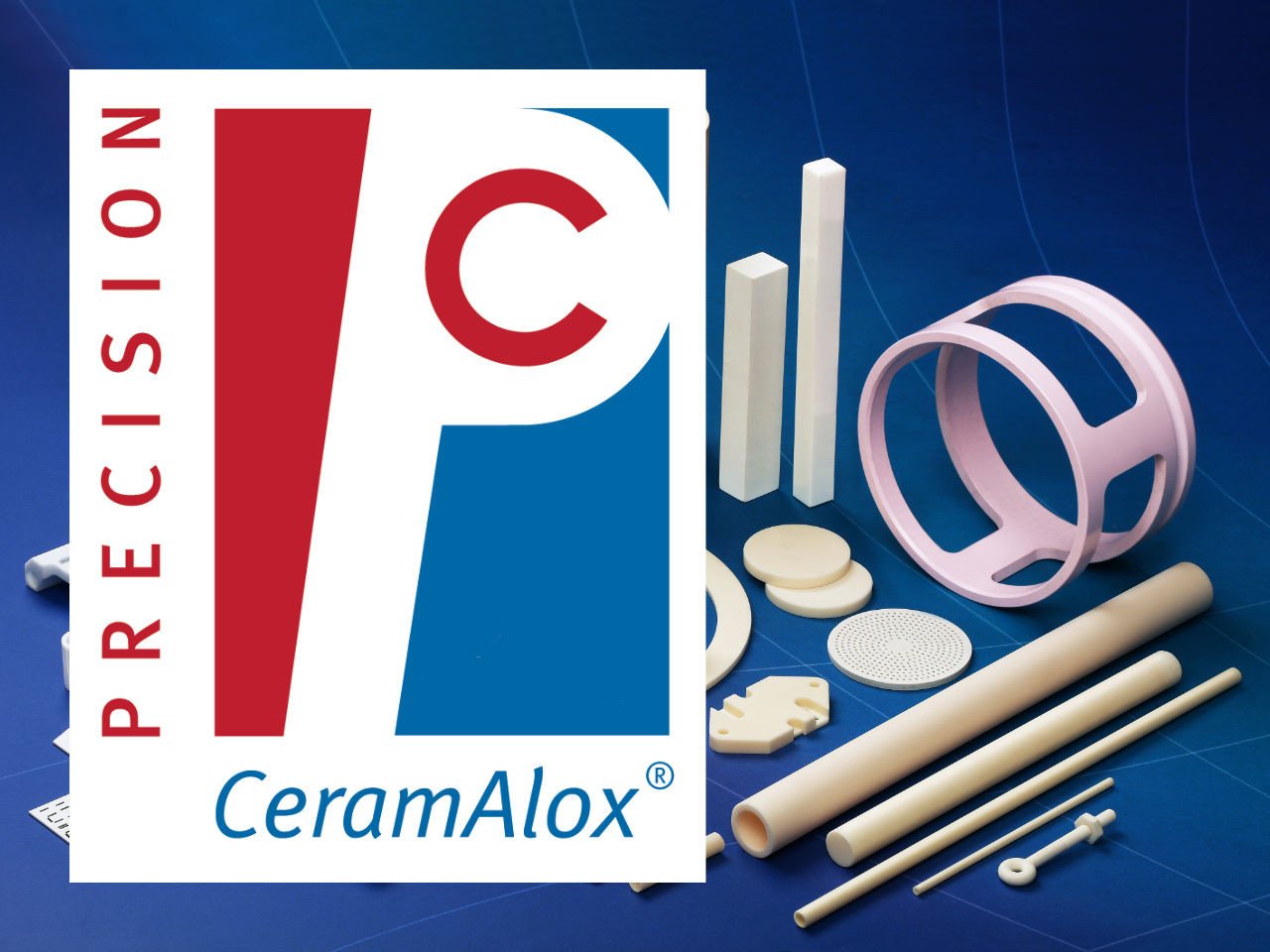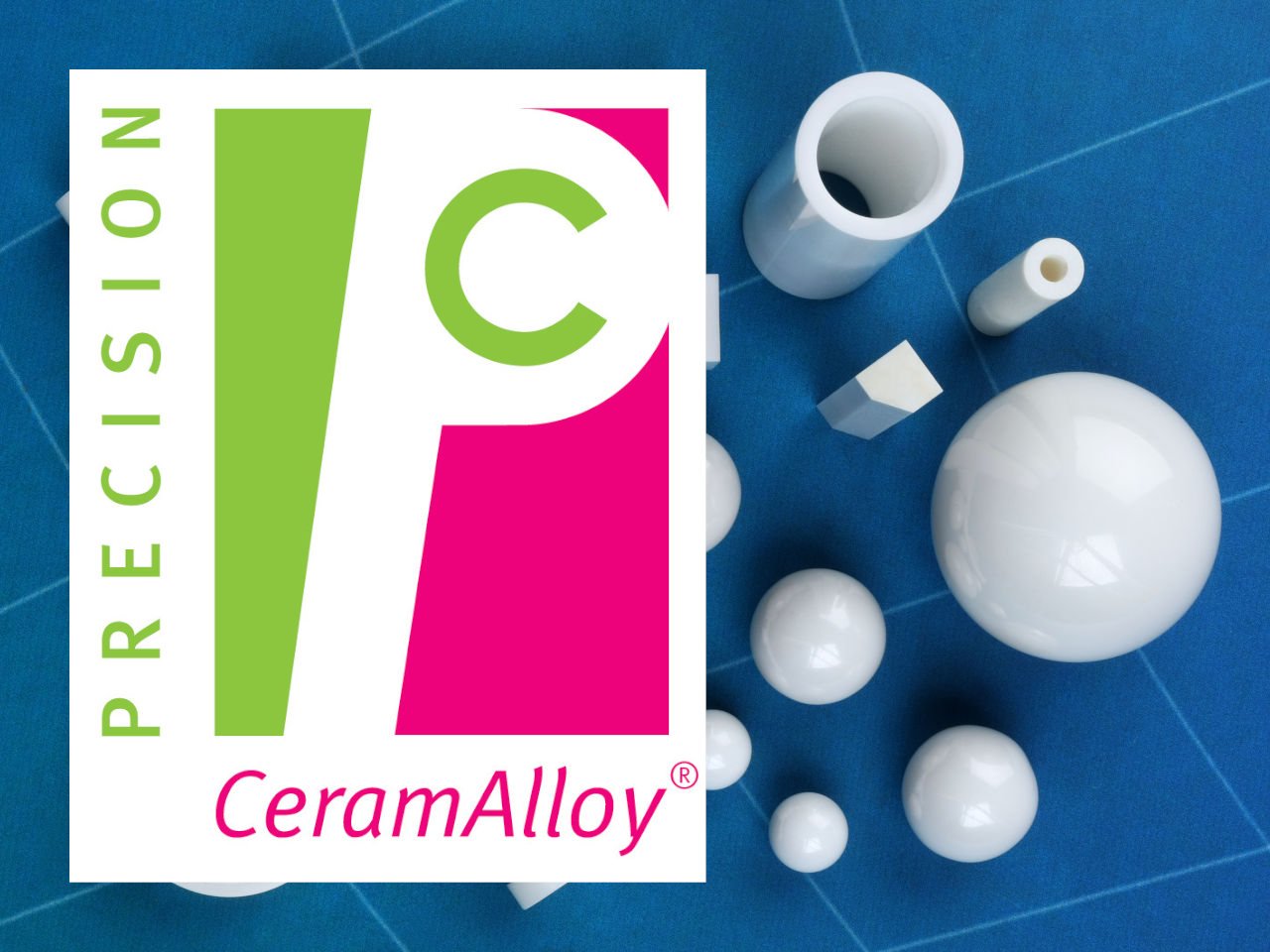Alumina Tubes & Rods
Protection Tubes
Alumina tubes are used as outer protection sheaths. For closed-one-end tubes they are produced as a one-piece unit rather than fusing an end piece on, making them much stronger and more reliable in operation. The single piece design guarantees complete resistance to penetration from the outer atmosphere and ensures excellent thermal shock resistance. The tubes provide a safe, secure and completely accurate environment for temperature measurement and process monitoring.
Aluminium Oxide (Alumina)
Aluminium oxide (Al2O3), more commonly known as alumina, is a hard wearing material and used throughout many industries. Once fired and sintered, it can only be machined using diamond-grinding methods. Alumina is the most commonly used type of ceramic and is available in purities up to 99.9%. Its combination of hardness, high temperature operation (up to 1,700°C) and good electrical insulation makes it useful for a wide range of applications.
Almost pure alumina (99.7%) provides the highest temperature operation for protection tubes.
It is commonly used as a high temperature electrical insulator, particularly the higher purity grades which offer better resistivity. It also offers good resistance to strong acids and alkalis at elevated temperatures, which makes it ideal for applications where resistance to corrosive substances is required. More information can be found on our Alumina – CeramAlox page.
Mullite (Aluminium Silicate)
Mullite/Aluminosilicate is a combination of aluminium oxide (Al2O3) and silicon oxide (SiO2).Suitable for operating temperatures up to 1,500°C, it has high temperature stability and chemical resistance and good mechanical strength. Coupled with low thermal expansion and high thermal shock resistance, it provides a more economical base material for temperature measurement applications in the form of multi-bore insulators and protection tubes..
Material Range
Alumina C799
99.7% Al2O3

High temperature stability, mechanical strength, and electrical resistivity
- Manufactured in accordance with IEC 60672-1
- Suitable for operating temperatures up to 1,700 °C
- High temperature stability and chemical resistance
- High mechanical strength
- High electrical resistivity
For more information please Contact Us.
Mullite C 610
60% Al2O3
High temperature stability, mechanical strength, and low thermal expansion
- Manufactured in accordance with IEC 60672-1
- Suitable for operating temperatures up to 1,500 °C
- High temperature stability and chemical resistance
- High thermal shock resistance
- Low thermal expansion.
For more information please Contact Us.
Material Properties
Material Characteristics
| Property | Unit | Test | Alumina C 799 | Mullite C 610 |
|---|---|---|---|---|
| Colour | – | – | White | White |
| Specific Gravity | kg/dm3 | ASTM C 20 | 3.85 | 2.8 |
| Water Absorption | % | ASTM C 373 | 0 | 0 |
| Hardness Rockwell | R 45 N | ASTM E 18 | 80 | – |
| Flexural Strength | N/mm2 | ASTM F 417 | 360 | 200 |
| *Maximum Temperature (Inert) | ℃ | – | 1,700 | 1,500 |
| Thermal Conductivity @ 25°C | W/mK | ASTM F 417 | 28 | 4 |
Thermal Expansion/Linear Coefficient
| Property | Unit | Test | Alumina C 799 | Mullite C 610 |
|---|---|---|---|---|
| 20 – 100℃ | X10-6/K | ASTM 372 | 5.4 | 4.5 |
| 20 – 300℃ | X10-6/K | ASTM 372 | 6.5 | 5.2 |
| 20 – 600℃ | X10-6/K | ASTM 372 | 7.7 | 5.8 |
| 20 – 1000℃ | X10-6/K | ASTM 372 | 8.5 | 6.7 |
| Dielectric Constant | X10-6/K | ASTM D 150 | 10 | 8 |
| Dielectric Strength | kV/mm | ASTM D 116 | >10 | 17 |
| Dielectric Factor | X10-3 | ASTM D 150 | 0.2 | – |
Volume Resistivity
| Property | Unit | Test | Alumina C 799 | Mullite C 610 |
|---|---|---|---|---|
| 200℃ | ohm-cm | ASTM D 257 | 1015 | 1011 |
| 400℃ | ohm-cm | ASTM D 257 | 1012 | – |
| 600℃ | ohm-cm | ASTM D 257 | 1011 | 104 |
Material Compound
| Property | Test | Alumina C 799 | Mullite C 610 |
|---|---|---|---|
| Aluminum Oxide | Al2O3 | >99.7% | 60% |
| Silicon Oxide | SiO2 | 0.05% | 37% |
| Iron Oxide | Fe2O3 | 0.06% | 0.6% |
| Magnesium Oxide | MgO | 0.15% | 0.15% |
| Calcium Oxide | CaO | 0.025% | 0.025% |
Disclaimer: The values presented are mean and typical of those resulted from test samples. They are provided as an indication only to serve as guidance in the design of ceramic components and are not guaranteed in any way. The actual values can vary according to the shape and size of the envisaged component.
Datasheet

Alumina Tubes
CeramTec
Alumina Machining
Alumina can be produced in a wide range of purities with additives designed to enhance its properties and aid manufacture. Typical purities range from 90 to 99.9% although Precision Ceramics generally works with 99.7% material.
Alumina can be injection molded, die pressed, isostatically pressed, slip cast, and extruded. Once fired and sintered, it can only be machined using diamond grinding methods. Advanced green and biscuit machining techniques developed by Precision Ceramics, allow more complex components to be manufactured than by using traditional machining methods. In addition, Alumina can be readily joined to metals or other ceramics, using a range of joining techniques including metalizing and brazing.
Alumina can be machined in green, biscuit, or fully dense states. While in the green or biscuit form, it can be machined relatively easily into complex geometries. However, the sintering process that is required to fully densify the material causes the alumina body to shrink approximately 20% in each direction. The variation in shrinkage means that it is impossible to hold tight tolerances when machining alumina pre-sintering. In order to achieve tight tolerances, the fully sintered material must be machined/ground with diamond tools. In this manufacturing process, a very precise diamond coated tool/wheel is used to abrade away the material until the desired form is created. Due to the inherit toughness and hardness of the material, this can be a time consuming and costly process.
Precision Ceramics specializes in tight tolerance and highly complex work. We have extensive in-house machining facilities, including 4th & 5th axis machining centres, drilling, grinding, milling, polishing, sawing, tapping, threading and turning. This allows us to manufacture ceramic components to the highest specifications.
Precision Ceramics is your machining specialist for advanced ceramic prototyping & manufacturing needs. We are always happy to use our many years of advanced ceramics experience to provide advice on material selection, design, and application. If you would like to buy Alumina plates, rods, tubes or custom machined components, please contact us and one of our experts will be happy to assist you.
Frequently Asked Questions
-
What's the difference between Macor and Alumina?
Alumina is a very commonly used technical ceramic due to its versatile properties, however, because it is such a hard material extensive diamond grinding is often required making it costly to produce in small quantities. Macor Machinable Glass Ceramic is often a viable alternative that can allows for significantly reduced production costs. The following are some factors to consider when choosing between Macor and Alumina.
Thermal Cycle
Macor is vulnerable to thermal shock – if you have rapid heat up and cool down cycles Macor may not be appropriate. Shapal may be a viable alternative.
Maximum Temperature
Macor has a maximum use temperature of 1000C (unstressed) and 800C (stressed); Alumina does offer higher temperature capabilities.
Wear Resistance
The same feature that makes Macor machinable means that it has relatively poor wear resistance when compared with Alumina.
Cost
For smaller quantities Macor often offers significant price reductions than Alumina components.
-
What is Alumina used for?
Alumina is a very hard ceramic and is excellent at resisting abrasion. It is ideal for wear-resistant inserts or products. Alumina is commonly used as a high temperature electrical insulator, particularly the higher purity grades which offer better resistivity. Alumina also offers good resistance to strong acids and alkalis at elevated temperatures and is ideal for applications where resistance to corrosive substances is required. Some common applications of Alumina include:
- Electronic components & substrates
- High temperature electrical insulators
- High voltage insulators
- Laser tubes
- Machine components
- Mechanical seals
- Precision shafts and axles in high wear environments
- Roller and ball bearings
- Seal rings
- Semiconductor parts
- Shot blast nozzles
- Thermocouple tubes
- Tap plates
- Valve seats
- Wear components
- Wire and thread guides
- Ballistic Armor
-
What are the advantages of Alumina?
Alumina, also known as Aluminium Oxide, is a hard wearing advanced technical ceramic material frequently used in a wide variety of industrial applications. It features high hardness and wear resistance, low erosion levels, high temperature resistance, corrosion resistance, and bioinertness. Additionally, it can be highly polished making it useful for precision sealing applications like pumps and pistons. Alumina is an excellent high temperature ceramic material due to its high temperature stability. It is the most commonly used type of advanced ceramic and is available in purities ranging from 95 – 99.9%.
Some of the key advantages of Alumina include:
High Temperature Ability – Alumina can be used in both oxidizing and reducing atmospheres up to 1650°C (2900°F) and in vacuum environments up to 2000°C (3600°F).
Abrasion Resistant – Alumina is a very hard ceramic and is excellent at resisting abrasion. It is ideal for wear-resistant inserts or products.
Electrical Insulator – Alumina is commonly used as a high temperature electrical insulator, particularly the higher purity grades which offer better resistivity.
Chemical Resistance – Alumina offers good resistance to strong acids and alkalis at elevated temperatures and is ideal for applications where resistance to corrosive substances is required.
Additional properties and advantages of Alumina include
- High hardness
- Wear & abrasion resistant
- High compressive strength
- High mechanical Strength
- Resists strong acid and alkali attack at high temperatures
- Excellent electrical insulation properties
- Decent thermal conductivity
-
What is the name of Al2O3?
Al2O3 is the chemical formula for Aluminium oxide, which is a chemical compound of aluminium and oxygen. It is commonly called alumina.
-
What's the difference between Zirconia, Alumina, and Zirconia Toughened Alumina (CeramAlloy)?
While Zirconia has the highest fracture toughness of all the oxide monolith ceramic materials, Alumina is one of the most cost effective ceramic materials yet exhibiting very high hardness, thermal stability and favourable electrical properties. CeramAlloy ZTA is a composite material based on Alumina and Zirconia and therefore combining to a certain extent the favourable properties of the two main constituents. So CeramAlloy ZTA will retain the very high hardness of Alumina but also show an increase in fracture toughness and bending strength owing to its Zirconia component so a true “best of both worlds”.







